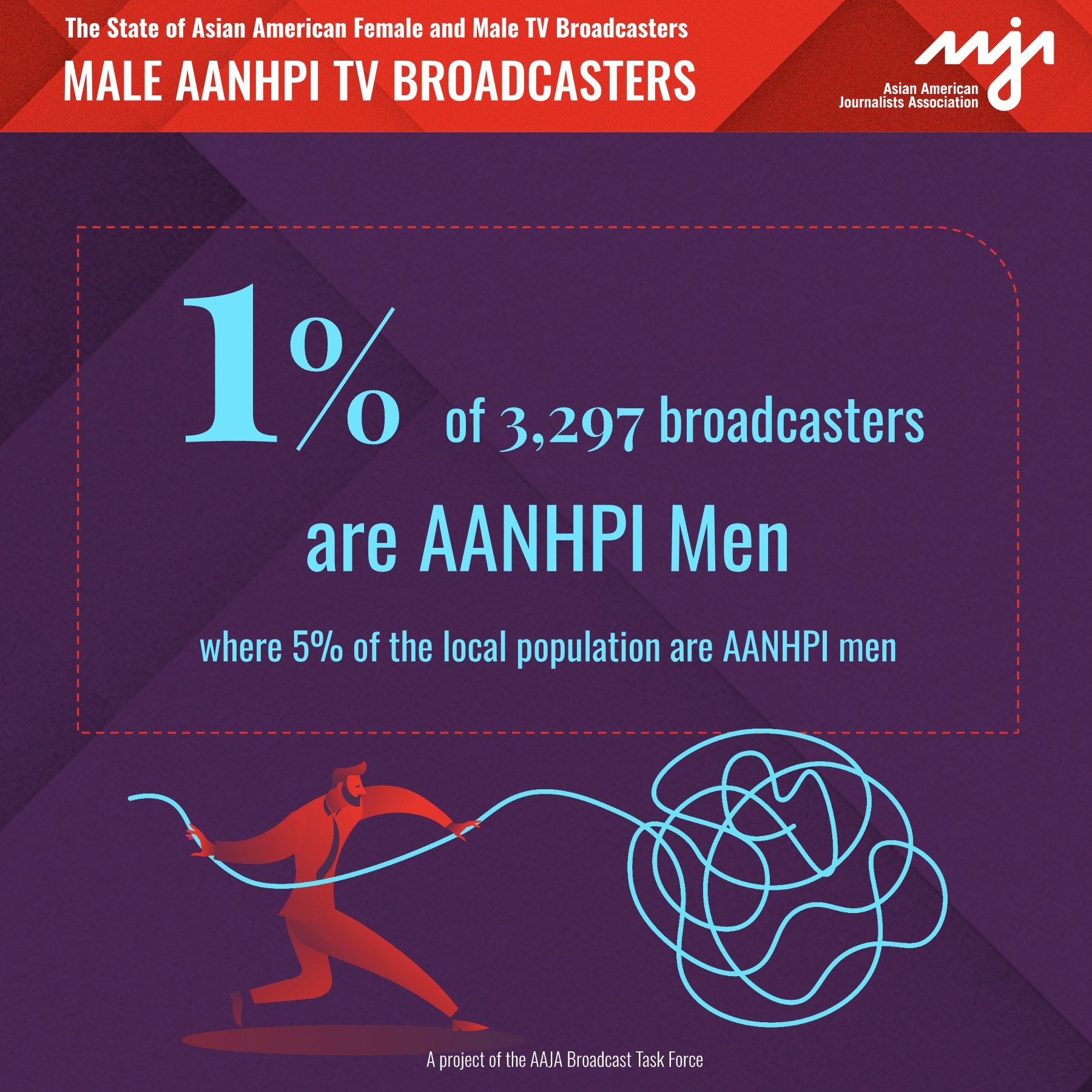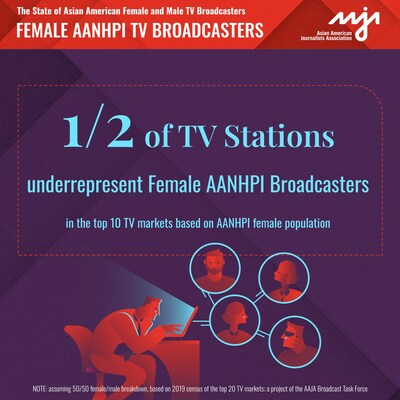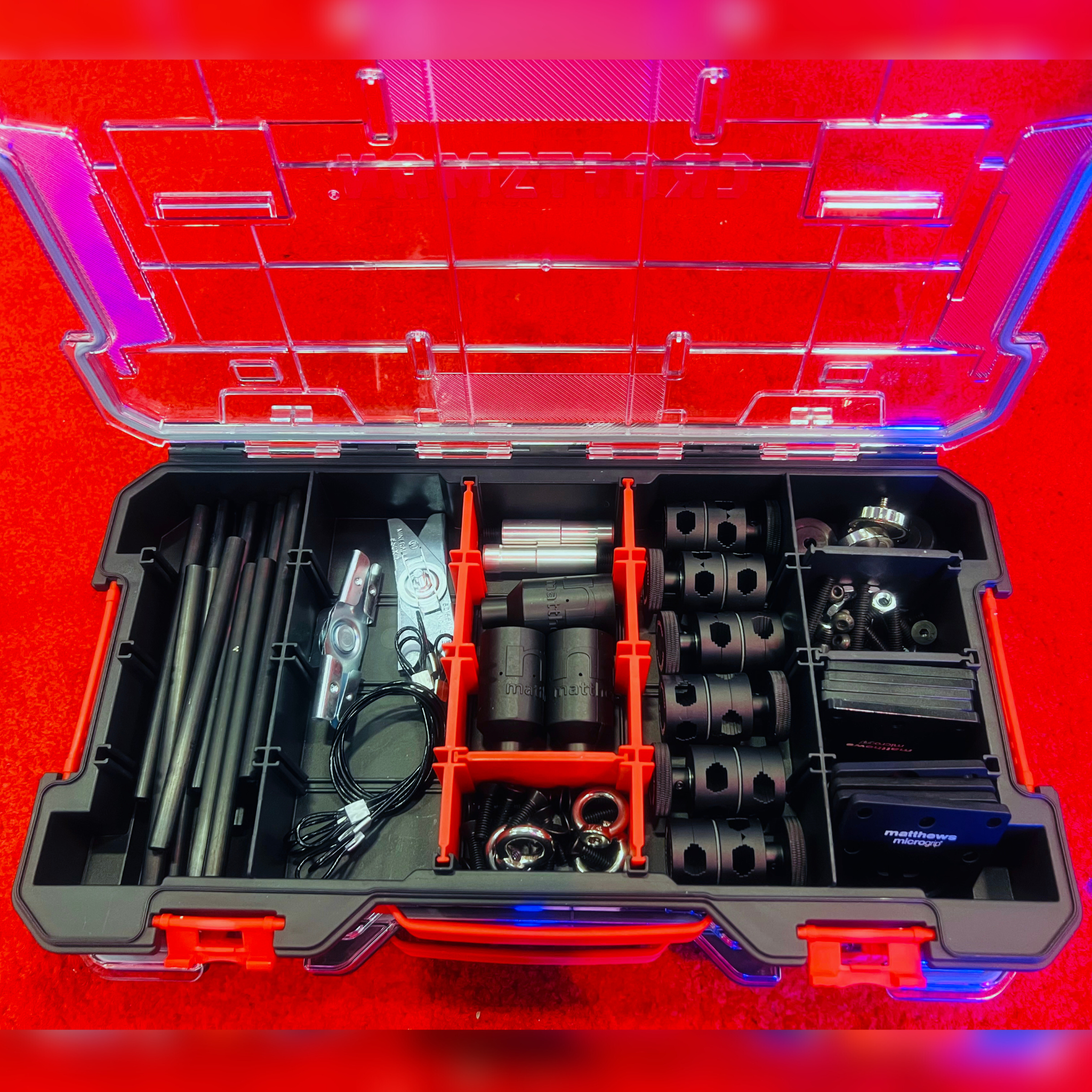Study: Asian Americans Underrepresented in Local TV News
Just one percent of broadcasters are Asian American men; one in four TV stations in top 20 markets have no Asian American women on air

NEW YORK—A new study indicates that local TV stations are dramatically underrepresenting Asian Americans, one of the country’s fastest growing populations, in their newsrooms with findings that only one percent of broadcasters are Asian American men and that one in four TV stations in top 20 markets have no Asian American women on air.
The analysis by the Asian American Journalists Association (AAJA), "The State of Asian American Female and Male TV Broadcasters" will be released during the organization's annual national convention in Austin, Texas (Aug. 7-11). A preview is available here.
"Both female and male AANHPI broadcast journalists face career challenges, but often in different ways that aren't widely understood, which is particularly challenging given stereotypes and biases towards AANHPIs." says Naomi Tacuyan Underwood, AAJA executive director. "For instance, data shows that despite improvements in recent years, AANHPI men are far from reaching full representation, while AANHPI women are seldom given full-time roles."

"This new analysis shows how far we still have to go," added Chris Nguyen, AAJA Governing Board Member and co-chair of AAJA's Broadcast Task Force. "Every day these reporters face stereotypes like demasculinization for AANHPI men or sexualization for AANHPI women that heighten the challenge for AANHPI TV broadcasters."
Key findings broken down for women and men include:
- No AANHPI women are on-air in 25 of 94 stations.
- Half of TV stations underrepresent AANHPI female broadcasters (in the top 10 TV markets; based on the AANHPI female population)
- AANHPI Woman represents the only AANHPI broadcaster at 18 of 94 stations.
- In communities where AANHPI population is below the national average, on-air AANHPI women are 46% underrepresented
- 162 of 3,297 (5%) broadcasters in the top 20 DMAs are AANHPI women
- No AANHPI men are on-air in 67 of 94 stations.
- 1% of 3,297 broadcasters are AANHPI men.
- 70% Underrepresented: If AANHPI male market population is considered, only 3 AANHPI male broadcasters work where 10 might.
- 1 in 10 TV stations hires as many AANHPI male broadcasters as is representative of their market's AANHPI male population
- 170% Improvement. In 2002, 17 AANHPI men were on air. In 2021, there were 46.
The authors of the study also offered seven key recommendations:
- COLLABORATION. Create partnership action plans between Media, Academia, Government and NGO communities.
- TAP AFFILIATES. Uplift affiliate talent to national, and smaller market affiliate talent to medium- large markets. Deploy programs to identify candidates.
- POSITION EXISTING TALENT. Assign and choose AANHPI women and men to prominent on-air positions, beats and stories.
- AANHPI PRODUCERS. Hire and develop AANHPI producers, who can help mitigate challenges AANHPI broadcasters face on camera.
- LAYERED APPROACH. Engage the pipeline: a) middle school, b) high school, c) community college, d) four-year education, e) entry-level job, f) early career, g) mid-career, h) late career, i) career transition, j) retirement.
- TOUGH QUESTIONS. Engage third-party research to ask core questions that media presidents and CEOs want to ask on diverse broadcaster gaps but cannot.
- ANNUAL CONVENING. An annual, pinnacle, public discussion and status evaluation. This panel or salon will huddle leaders and decision makers from multiple sectors.
AAJA released the "Broadcast Snapshot" in 2022 in the absence of publicly available diversity data. "The State of Asian American Female and Male TV Broadcasters" includes new analysis done in 2024 based on the data from the "Broadcast Snapshot." The 2022 and 2024 releases build on AAJA's mission to advance diversity in newsrooms and ensure fair and accurate coverage of communities of color.
Get the TV Tech Newsletter
The professional video industry's #1 source for news, trends and product and tech information. Sign up below.
The base data comes from July to September 2021, when AAJA staff and member volunteers surveyed 94 local, English-language commercial TV stations in the top 20 DMAs. Project staff used resources such as station websites, AAJA membership, and public pages to find on-air staff who either looked AANHPI or self-identified as AANHPI. Information collected included the number of AANHPI on-air staff, the AANHPI population, and station ownership. This effort revealed a total of 201 AANHPI on-air staffers across the top 20 DMAs.
The Broadcast Snapshot (2022) can be found here. The 2024 analysis from "The State of Asian American Female and Male TV Broadcasters" can be found here.
George Winslow is the senior content producer for TV Tech. He has written about the television, media and technology industries for nearly 30 years for such publications as Broadcasting & Cable, Multichannel News and TV Tech. Over the years, he has edited a number of magazines, including Multichannel News International and World Screen, and moderated panels at such major industry events as NAB and MIP TV. He has published two books and dozens of encyclopedia articles on such subjects as the media, New York City history and economics.

